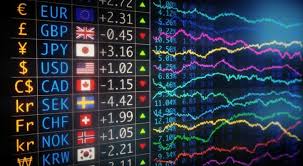
Understanding Forex Trading Charts: A Comprehensive Guide
The world of forex trading relies heavily on a range of tools, and trading charts are paramount amongst them. Forex trading charts provide crucial insights into market trends, patterns, and price movements, enabling traders to make informed decisions. In this article, we will delve into different types of forex trading charts and explore how to effectively use them for market analysis. For more detailed information, you can visit forex trading charts https://forex-exregister.com/.
What Are Forex Trading Charts?
Forex trading charts are graphical representations of currency pair price movements over time. These charts display historical data, allowing traders to visually analyze market trends and make predictions about future price movements. They are essential tools for both technical analysis and fundamental analysis, as they depict market conditions and price levels over various time periods.
Types of Forex Trading Charts
There are several types of charts used in forex trading, each offering unique insights into market behavior:
1. Line Chart
The line chart is the simplest type of chart, connecting a series of data points with a continuous line. It primarily displays closing prices over a specific period, providing a clear visual overview of price trends. Line charts are beneficial for identifying long-term trends but may lack detailed information about price fluctuations during that period.
2. Bar Chart

Bar charts provide more detailed information than line charts. Each vertical bar represents a specific time period and displays four key price points: the opening price, the closing price, the highest price, and the lowest price. The top of the bar indicates the highest price, while the bottom indicates the lowest. A horizontal line on the left side of the bar shows the opening price, while a line on the right indicates the closing price. This format allows traders to quickly assess volatility and price trends within a given period.
3. Candlestick Chart
Candlestick charts are among the most popular chart types in forex trading. Each candlestick reflects price movements for a specific time period and comprises a body and two wicks. The body indicates the range between the opening and closing prices, while the wicks illustrate the highest and lowest prices during that period. Candlestick charts not only provide a clearer picture of price movements, but they can also reveal trends, patterns, and market sentiment.
4. Point and Figure Chart
Point and figure charts differ from traditional charts, as they focus on price movements rather than time. This type of chart uses Xs to represent price increases and Os to represent price decreases. Point and figure charts are particularly useful for identifying horizontal and vertical trends, as they filter out small price movements and focus on larger price changes.
Reading Forex Trading Charts
Understanding how to read forex trading charts is critical for making informed trading decisions. Here are some key aspects to consider:
1. Time Frames

Forex trading charts can represent price data over various time frames, including minutes, hours, days, and weeks. The choice of time frame depends on your trading style. Day traders may prefer shorter time frames, while long-term traders might focus on daily or weekly charts to capture the broader market trend.
2. Support and Resistance Levels
Support and resistance levels are crucial concepts in chart analysis. Support levels indicate where demand is strong enough to prevent prices from falling further, while resistance levels indicate where supply is strong enough to prevent prices from rising. Identifying these levels can help traders make informed decisions about entry and exit points.
3. Trends
Recognizing trends is vital for forex traders. A trend can be upward (bullish), downward (bearish), or sideways (ranging). Analyzing trend lines drawn along price movements can help traders identify potential opportunities. In an uptrend, traders may look for buying opportunities, while in a downtrend, they may look for selling opportunities.
Technical Indicators and Forex Trading Charts
Many traders enhance their chart analysis with technical indicators. These indicators, such as moving averages, Relative Strength Index (RSI), and Fibonacci retracement levels, provide additional insights into market behavior. Combining these indicators with forex trading charts can improve the accuracy of predictions and enhance overall trading strategies.
Conclusion
Forex trading charts are indispensable tools for traders, offering visual representations of price movements and market trends. Understanding the different types of charts and how to read them is essential for making informed trading decisions. Whether you’re using line charts, bar charts, or candlestick charts, knowing when and how to interpret price data is key to successful trading in the forex market.